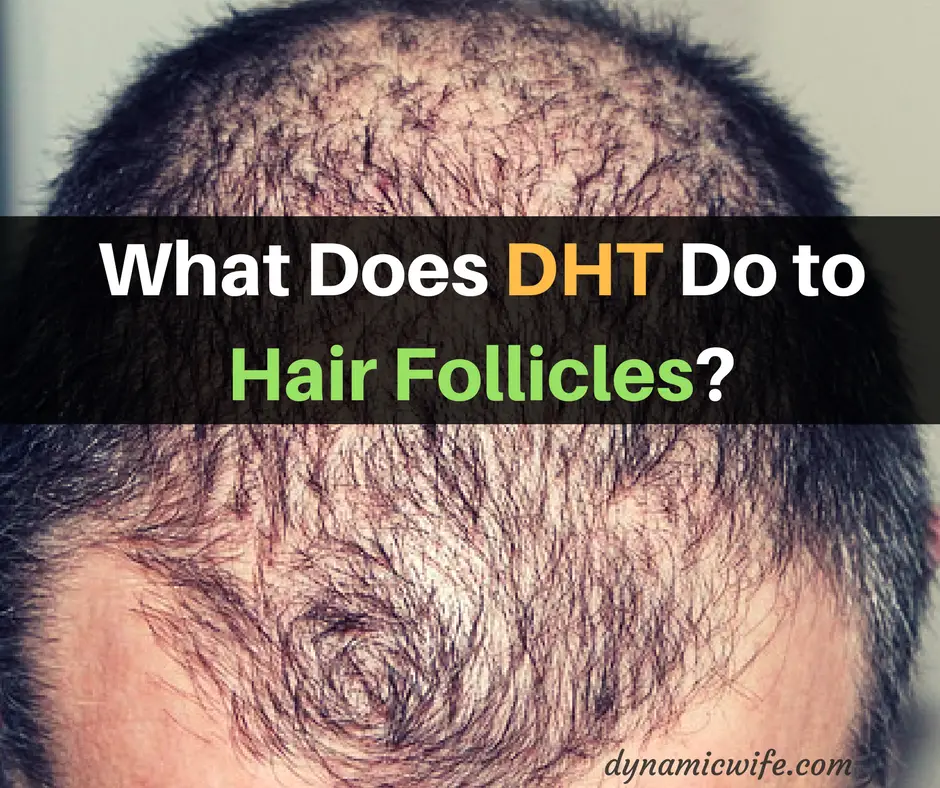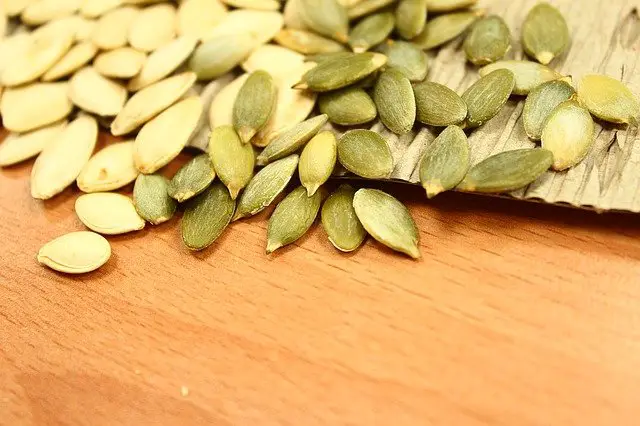What does DHT do to the hair follicles?
We’re going to look at all the possible data backed reasons of how and why DHT (Dihydrotestosterone) causes hair loss.

DHT stands for Dihydrotestosterone, which is a potent androgen and a byproduct of Testosterone. Along with genetic factors, DHT has been clinically proven as one of the main culprits behind male pattern hair loss. It can be inhibited using the help of these natural DHT blockers.
Interesting fact: It’s important to remember that you absolutely need DHT until you’ve hit puberty and developed all your male characteristics such as deepened voice, hairy chest (?), other masculine features and the growth of your private part.
This is because DHT is responsible for developing all those male characteristics. It only starts having a negative impact on your hair growth once you’ve reached adulthood. A study conducted among a group of healthy men and women found that the production rate of DHT was significantly higher in men diagnosed with male pattern baldness. [2]
Another crazy thing? While DHT can trigger hair loss in your scalp, it actually does the opposite on your face and body.
Understanding your hair growth cycle

In order to understand exactly how DHT causes hair loss, we need to have a look at the way our hair grows.
The development of hair follicle occurs in 3 phases: [6]
- Active growth (Anagen): 2-6 years.
This is the period when new hair grows and continues to grow longer while pushing out any old dead hair out of the way. The longer it takes to grow, the longer the length of the hair.
Have you ever complained about why your hair never grows longer? It’s because of the length of your anegan hair growth phase.
This part of the hair growth cycle is significantly shorter for your body and facial hair, that’s why your armpit hair will never be as long as the hair on your head. Don’t take that as a challenge though.
- Inhibition of growth and atrophy of the hair follicle (Catagen): 2-3 weeks
This is a short period of time that follows immediately after the anagen hair growth phase. This is the period when any old hair that’s meant to naturally fall out will be prepared to detach from the hair follicle shaft.
- Resting (Telogen): lasts 2-3 months
After the dead hairs are gone, your hair follicles will go on a resting period to start preparing for the next Anagen phase. The growth of new hairs will begin and the cycle will continue.
Understanding connection between 5-Alpha Reductase and DHT
5- Alpha Reductase is the enzyme responsible for the conversion of Testosterone into Dihydrotestosterone (DHT).
5a-R is grouped into 2 isozymes: 5a-R1 and 5a-R2. The second type is located in the hair follicles and is mainly responsible for the conversion of testosterone to DHT.
Both types of 5a-reductase enzymes are present in men and women, however, type 2 is mainly associated with the hair loss in men and type 1 5a-R is associated with the hair loss in women [3].
Clinical studies have shown that inhibiting 5a-Reductase type 2 decreases scalp DHT and promotes hair growth in men with male pattern hair loss. [4]
So what exactly does DHT do to cause male pattern baldness?
DHT present in your scalp tissue attaches to androgen receptors in the hair follicles which triggers a genetic reaction and causes your hair follicles to start miniaturizing. [8]
As a result, your hair follicles will start producing finer, lighter baby hairs that can easily fall.
It also decreases the length of the anagen (active growth) phase of hair follicles and increasing the length of the telogen (Resting) phase. [7]
DHT causing miniaturization results in weak hairs and then by extending the Telogen (Resting) phase, the new hairs take forever to grow back. This gradual weakening of the hair follicles and lengthening of the Telogen phase leads to male pattern hair loss.
Sucks don’t it? But don’t lose hope.
It can be reversed slowly and steadily with the use of correct DHT inhibitors and other lifestyle changes.
Some of the popular and widely recommended natural DHT blockers include Saw Palmetto, Pumpkin seeds, and Rosemary.
What does research say about them?
Pumpkin Seeds

A 2014 double-blind study carried out on 76 men found out that Pumpkin Seed Oil (PSO) improves hair growth in men with Androgenetic Alopecia (AGA) [1].
What they did:
- 76 male patients with AGA were divided into 2 groups: one for the PSO treatment and one placebo.
- The treatment group received 400mg of PSO per day for 24 weeks and the control group received placebo in the same manner.
Results:
- Self-rated improvement and satisfaction score was higher in the group that took Pumpkin Seed Oil.
- The pso-treated group had more hair than at baseline compared to the placebo group.
- Mean hair count of 40% was seen in the PSO group and 10% in the placebo group.
The study concluded that Pumpkin seed oil could improve AGA and that it should be considered as a potential alternative treatment.
Saw Palmetto
Saw Palmetto, also known as Serenoa Repens has been found to work against hair loss by decreasing the binding of DHT to androgenetic receptors [9].
A 2012 study carried out on 100 male patients with Androgenetic Alopecia found that Saw Palmetto could lead to an improvement in AGA [10].
Rosemary

Rosemary oil is another widely recommended natural DHT blocker. In a 2015 study, the effectiveness of Rosemary for treating AGA was compared with Minoxidil [11].
What they did:
They were divided into 2 groups: One group received Rosemary oil and the second group received 2% Minoxidil for 6 months.
Results:
They found that both Minoxidil and Rosemary oil helped increase hair count and the Minoxidil group had more frequent scalp itching than the Rosemary oil group. They concluded that RO can help in the treatment of Androgenetic Alopecia.
It’s also important to note that Minoxidil is a widely used over the counter medication for the treatment of Androgenic Alopecia. So the fact that Rosemary oil can work close to its effectiveness is a huge plus for an all natural treatment.
What has been your experience with DHT?
Have you tried any natural DHT blockers that worked for you?
Please feel free to share your experience below.
Nice article its very helpfull thanks for sharing